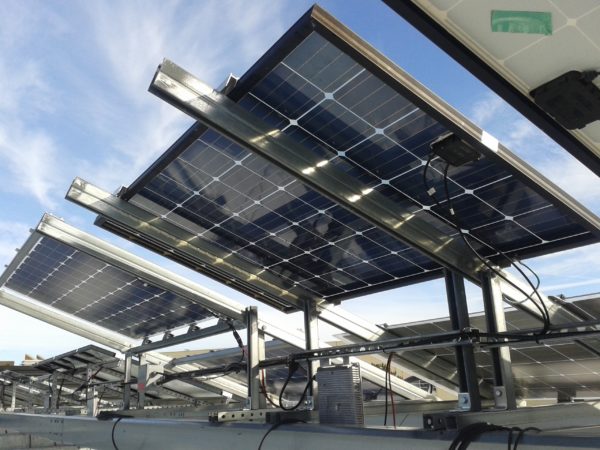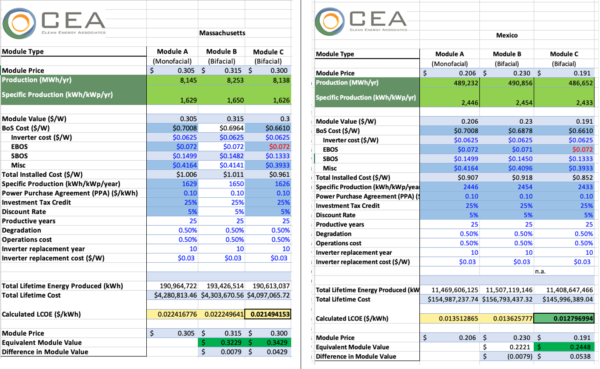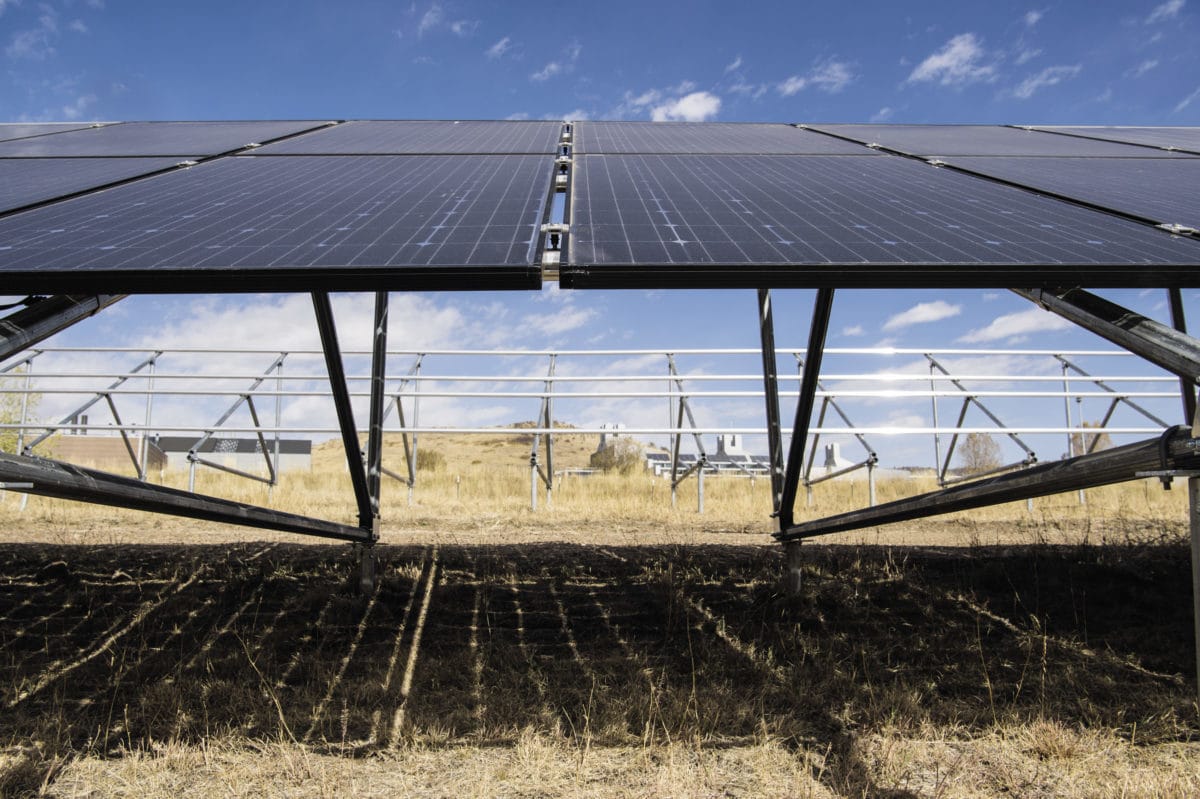When do the benefits of bifacial modules outweigh the typical cost advantages of monofacial options?
In an attempt to answer this commonly asked question, Clean Energy Associates (CEA) released a case study that compares the levelized cost of energy (LCOE) for bifacial and mono PERC modules and outlines scenarios where each makes the most sense.
The crux of the issue is that bifacial modules promise an energy yield 6% to 10% or greater higher than traditional mono PERC modules. But they come with a higher dollar-per-watt module cost, as well as increased expenses for balance of system (BOS) and installation.

Image: Silfab
The answer to which design to choose often depends on project location and size, as well as the other hardware being used, specifically trackers. Capturing bifacial’s value and its impact on a project’s bottom line over a 25 to 30-year life cycle begins with the basic LCOE formula, (life-cycle cost of the project divided by lifetime energy production) however a litany of factors can change the values in both cost and production.
To make a base evaluation, CEA, a PV and battery storage quality assurance, supply chain management, and engineering services firm, used PVsyst to model optimized layouts for the modules and locations being analyzed. After that they priced all equipment, labor, design and engineering, permitting, overhead and margin, and other costs–except the module.
The created formula also inputs the estimated annual kWh generated, the power purchase agreement (PPA) price, the investment tax credit, and operations and maintenance (O&M) costs. Variables in the equation include the longer life cycles of bifacials – 25 to 30 years – and their higher BOS and installation costs. For the sake of simplicity, degradation and O&M are set at about 0.5% per year.
Once the full gauntlet of factors are accounted for, a “hurdle price,” or price below which a bifacial panel will provide additional value based on the LCOE of a sample single-face system, can be established. The hurdle price is then used to back-calculate the price-per-watt module value for one or more bifacial panels.
CEA prepared a hypothetical comparison between monofacial Module A, and two bifacials, Module B and Module C, calculated for projects in Massachusetts and Mexico. For this hypothetical, the goal is to see if purchasing a large supply of one of the selected bifacial panels will make financial sense for the two locations.

Even with the large differences in production and base LCOE related to location, the option known as Bifacial Module C delivered higher and comparable module value.
CEA said that this model still has room for improvement. For example, it does not yet incorporate comparisons for the increasingly-popular large-format modules that have hit the market. Larger modules require wider row spacing, which in turn could mean longer wire lengths and a resulting voltage drop. An LCOE module comparison can reveal the positive or negative value of these tradeoffs.
Another point not addressed by this comparison is that as bifacial module prices continue to come down, the bifacial boost in production needed to offset higher upfront costs will also fall. While the increased production of bifacial panels is generally estimated at 6% to 10% per year, the team at CEA said that a much lower percentage could be needed to cover the upfront costs, though this figure will depend on a project’s location and other factors.
This content is protected by copyright and may not be reused. If you want to cooperate with us and would like to reuse some of our content, please contact: editors@pv-magazine.com.









By submitting this form you agree to pv magazine using your data for the purposes of publishing your comment.
Your personal data will only be disclosed or otherwise transmitted to third parties for the purposes of spam filtering or if this is necessary for technical maintenance of the website. Any other transfer to third parties will not take place unless this is justified on the basis of applicable data protection regulations or if pv magazine is legally obliged to do so.
You may revoke this consent at any time with effect for the future, in which case your personal data will be deleted immediately. Otherwise, your data will be deleted if pv magazine has processed your request or the purpose of data storage is fulfilled.
Further information on data privacy can be found in our Data Protection Policy.